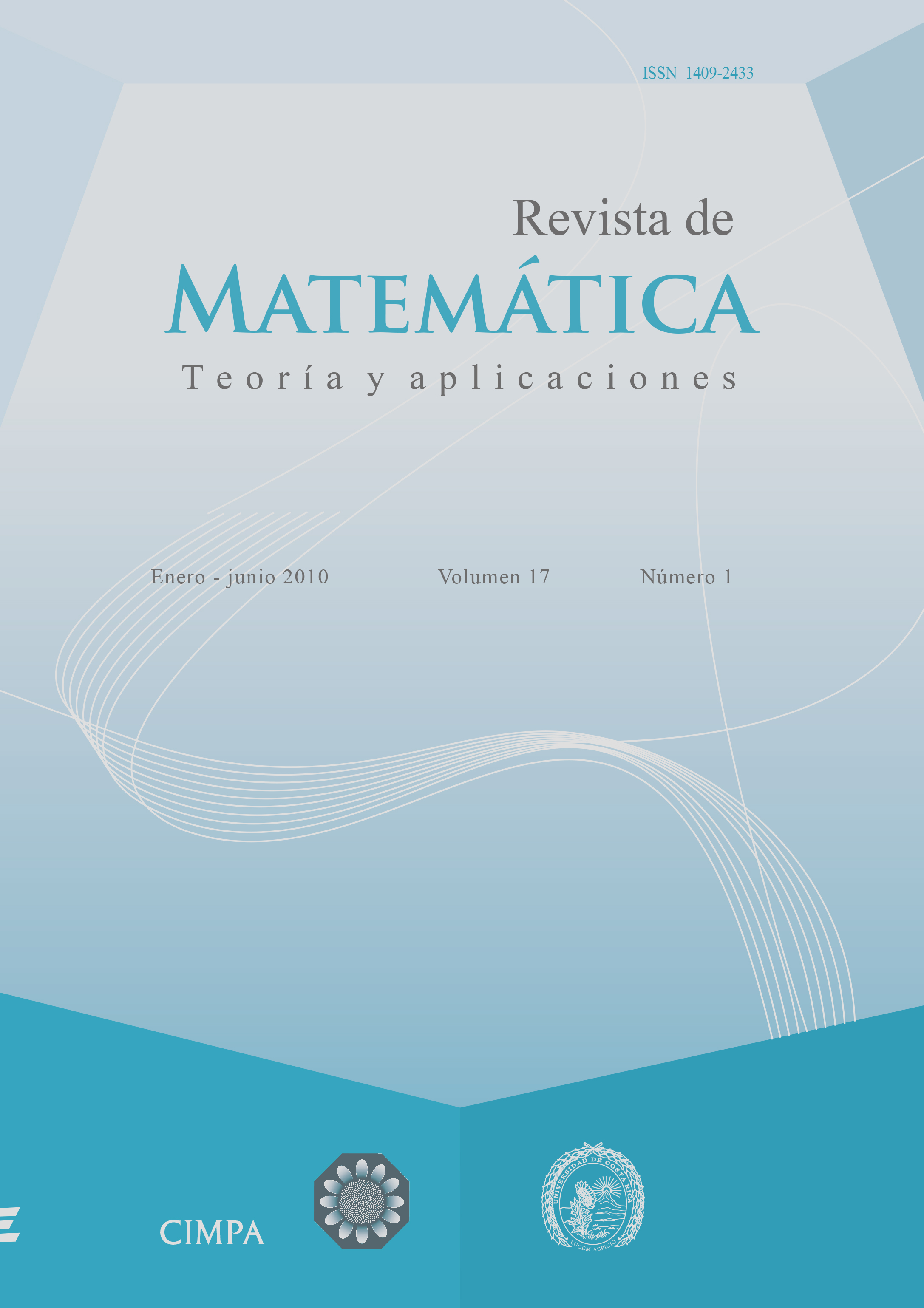Resumen
La aportación de este estudio es la aproximación multidimensional sobre patrones de consumo de drogas en jóvenes. Los datos provienen del estudio “Factores que inciden en el consumo de drogas, población juvenil. Región Central de Occidente” de Costa Rica, 2006. Con base en los resultados obtenidos con un modelo de clases latentes, se establecen 8 subgrupos de individuos según el consumo de las diferentes drogas.
Citas
Agresti, A. (1984) Analysis of Ordinal Categorical Data. John Wiley and Sons, New York.
Andersen, E. (1991) The Analysis of Categorical Data. Springer-Verlag, Berlin.
Anderson, T. (1954) “On estimation of parameters in latent structure analysis”. Psychometrika 19(1): 1–10.
Bartholomew, D. (1987) Latent Variable Models and Factor Analysis. 2nd edition, Oxford University Press, London.
Clogg, C.C. (1995) “Latent class models: recent developments and prospects for the future”, in: C.C. Clogg; G. Arminger & M.E. Sobel (Eds.) Handbook of Statistical Modeling in the Social Sciences, Plenum, New York: 311–359.
Dempster, A.P.; Laird, N.M.; Rubin, D.B. (1977) “Maximum likelihood from incomplete data via the EM algorithm”, Journal of the Royal Statistical Society 39: 1–38.
Efron, B. (1979) “Bootstrap Methods: Another Look at the Jackknife”, The Annals of Statistics 7: 1–26.
Efron, B.; Tibshirani, R. J. (1993) An Introduction to the Bootstrap. Chapman and Hall, London.
Goodman, L. (1974) “Exploratory latent structure analysis using both identificable and unidentificable models”, Biometrika 61(2): 215–231.
Henry, N.; Lazarsfeld, P. (1968) Latent Structure Analysis. Houghton Mifflin, Boston.
Instituto Sobre Alcoholismo y Farmacodependencia (2007) La Juventud y las Drogas: Encuesta Nacional sobre Percepciones y Consumo en Población de Educación Secundaria. San José, Costa Rica.
Langeheine, R.; Pannekoek, J.; Van de Pol, F. (1996) “Bootstrapping goodness-of-fit measures in categorical data Analysis”, Sociological Methods & Research 24(4): 492–516.
Manly, F. (1997) Randomization, Bootstrap and Monte Carlo Methods in Biology. Chapman & Hall, London.
McHugh, R. (1956) “Efficient estimation and local identification in latent class analysis”, Psychometrika 21(4): 331–347.
Read, T.; Cressie, N. (1988) Goodness-of-Fit Statistics for Discrete Multivariate Data. Springer-Verlag, New York.
Ugalde, M.; Barboza, A.; Orozco, J.; Esquivel, J.; Jiménez, J.; Gómez, A. (2000) “Análisis del consumo de drogas en adolescentes escolarizados de Costa Rica”, Revista de la Asociación de Ciencias Penales de Costa Rica 18(24): 79–84.
Vermunt, J.; Magidson, J. (2002) “Latent class cluster analysis”, in: J.A. Hagenaars & A.L. McCutcheon (Eds.) Applied Latent Class analysis. Cambridge University Press, London: 89–106.
Von Davier, M. (1997) “Bootstrapping goodness-of-fit statics for sparse Categorical Data – Results of a Monte Carlo study”, Methods of Psychological Research Online 2: 29–48.
Von Davier, M. (2001) WINMIRA 3.2 pro. Institute for Science Education (IPN), Kiel.





